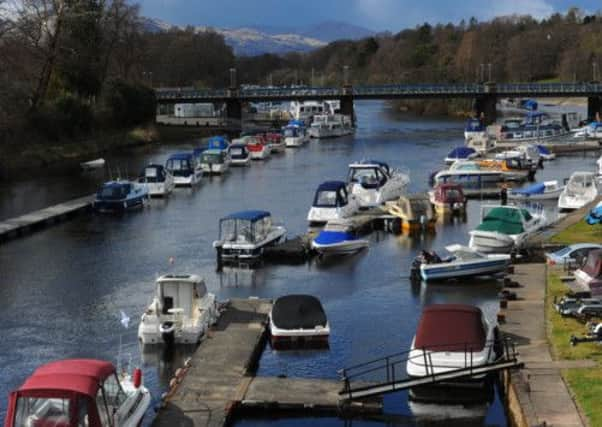Plans for canal to connect Clyde and Loch Lomond


The £70 million canal would run from Dumbarton harbour to the River Leven barrage at Balloch and link the sailing areas of the Clyde estuary with the loch for the first time. The new route would make it possible to sail from Edinburgh to the northern tip of Loch Lomond and would significantly boost tourism in the area.
Last month, the Scottish Environment Protection Agency met with a number of organisations including Scottish Natural Heritage, Scottish Canals, West Dunbartonshire Council and the Loch Lomond and the Trossachs National Park Authority to discuss environmental concerns surrounding a large-scale engineering project that would last several years. It is understood a feasibility investigation into the canal will now get under way.
Advertisement
Hide AdAdvertisement
Hide AdAlthough a number of 18th and 19th-century canals in Scotland have recently undergone multi-million-pound regeneration projects, there has not been a new canal built in the country since 1818, when the Union Canal was constructed.
A spokesperson for SEPA said: “SEPA has met with a number of public bodies regarding proposed plans for a canal which will connect the Clyde Estuary and Loch Lomond. Discussions are still at an early stage and all parties have been advised of the environmental issues which must be addressed before any formal applications are submitted.”
The canal would run alongside the River Leven, which flows from the southern end of Loch Lomond at Balloch through the towns of Alexandria and Vale of Leven to the River Clyde at Dumbarton.
Steve Dunlop, chief executive of Scottish Canals, said that work on the project was progressing. “We have done a considerable amount of work on the design of the Lomond Canal, a proposed five-mile long channel to connect the Clyde estuary with Loch Lomond and we have researched the engineering practicalities,” he said.
“While we know that building a new canal channel is feasible, the project is in the very early stages and further work is needed to establish the ecological effects of any construction. Further analysis is also needed with partners to identify a lead organisation and determine the economic and social benefits that this project could bring.”
The canal, which would run through West Dunbartonshire, would bring a significant tourism boost to the area and the council has already created a zone along the potential route to protect against building development.
A spokesperson for West Dunbartonshire Council, which costed the project at £70m, said: “The canal has been an ambition of the council for a number of years.”
Gordon Watson, director of visitor experience and rural development at Loch Lomond and the Trossachs National Park Authority said: “We welcome the opportunity to connect boat use into Loch Lomond but we want to make sure we’re doing it right so that when people arrive it’s a good experience at the south end – that there are enough berthing positions, things to do. We’re saying that the loch should be part of the plan but that for us it’s about the destination, not just the route.”
Advertisement
Hide AdAdvertisement
Hide AdHowever there was also concern about the impact such a project would have on the local environment and the wildlife.
Peter Jack, chairman of the Loch Lomond association, said some residents’ views were negative. “There has been a strong view that many don’t really see it as an advantage,” he said. “There are so many unknowns with a project like this. One which is of great concern to the fishermen is that there would be additional non-native species admitted into the loch, including the American Signal Crayfish, which is currently in the River Clyde and is a predator and on various blacklists of undesirable fauna. These are the sort of things that must be considered.”
Mike Cantlay, chairman of VisitScotland, said: “A canal link between Loch Lomond and the Clyde is a great idea and does have potential leisure benefits, but it is important that any environmental concerns are taken into account.”
Twitter: @emmacowing